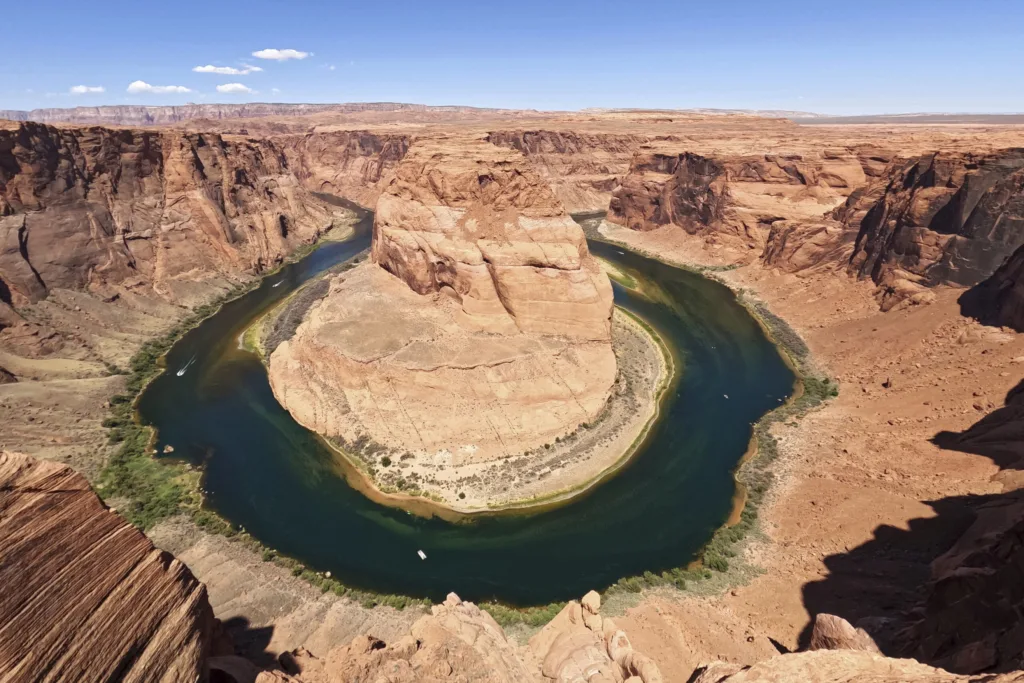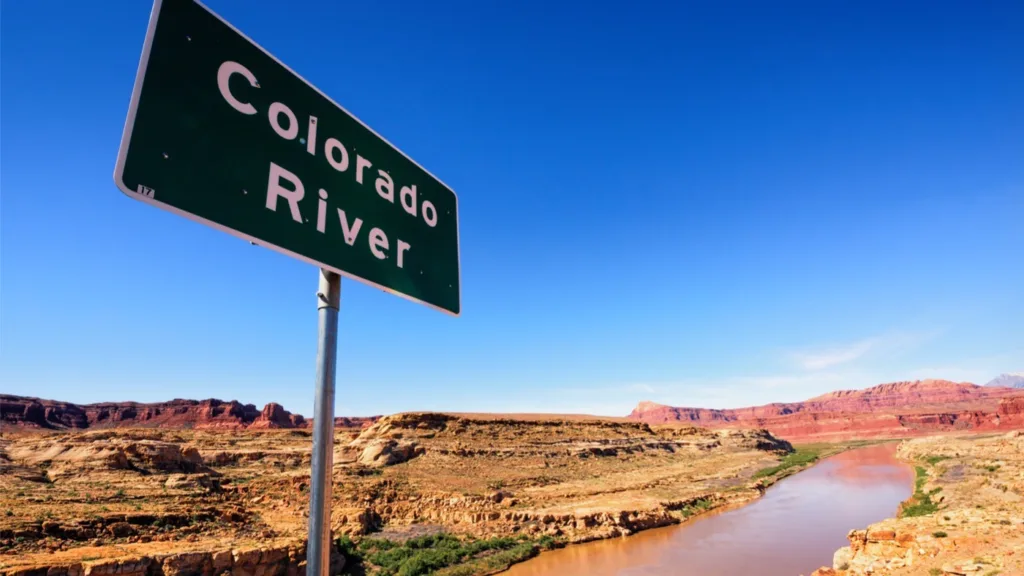Colorado, a state located in the western United States, is known for its diverse landscapes and unique climate. One of the most intriguing questions about this state is whether or not it can be considered a desert.
When people hear the word “desert,” they typically think of a hot, dry, and barren landscape. While Colorado certainly has areas that fit this description, it’s not quite accurate to describe the entire state as a desert.
In fact, Colorado’s climate can be best described as semi-arid. This means that it is a halfway point between a desert and a more temperate climate. While some areas of the state do receive very little precipitation and can be quite hot and dry, others have more moderate temperatures and see more rainfall throughout the year.
The primary reason for this semi-arid climate is the state’s high elevation. Many areas of Colorado are located at or above 5,000 feet above sea level, which can result in cooler temperatures and less moisture in the air.
Despite this, tere are areas of Colorado that are classified as deserts. One example is the Great Sand Dunes National Park, located in the southern part of the state. This area features massive sand dunes that can reach heights of up to 750 feet. The park also receives very little rainfall, making it a true desert environment.
Another example of a desert area in Colorado is the San Luis Valley, also located in the southern part of the state. This area sees very little precipitation and is home to a variety of desert plants and animals.
While Colorado cannot be considered a full-fledged desert state, there are certainly areas within its borders that fit this description. The state’s semi-arid climate is unique and offers a diverse range of landscapes and ecosystems for visitors to explore.
Is Colorado a Desert State?
Colorado is not entirely a desert, but it does contain several desert areas. The state has a diverse climate due to its varying topography and elevation ranges. The eastern part of Colorado, also known as the Great Plains, is generally flat with a semi-arid climate. This region experiences hot summers and cold winters with low precipitation.
On the othr hand, the western part of the state is mountainous with a more alpine climate. The Rocky Mountains cause the western region to have cooler temperatures and higher precipitation compared to the eastern region.
In terms of desert areas, Colorado has a few. The most prominent is the Great Sand Dunes National Park and Preserve, located in southern Colorado. This area is a unique blend of desert and mountain landscapes, with the tallest sand dunes in North America.
Other desert areas in Colorado include the Grand Valley and Uncompahgre Plateau in the western part of the state. These areas have a high desert climate, with dry air and low precipitation.
While Colorado is not entirely a desert, it does have several desert areas. Its diverse topography and varying elevation ranges contribute to a wide range of climates throughout the state.

Is Denver Located in a Desert?
Denver is not technically a desert, but it does have a semi-arid climate. The term “semi-arid” refers to areas that receive less precipitation than what is typically required to sustain a full-fledged forest but more than what is found in a true desert.
Denver’s climate is influenced by its high elevation and location in the interior of the continent, far from any major sources of moisture. The city’s average annual precipitation is just over 15 inches, which is less than half of what most people would consider a “wet” climate. Denver’s winters are cold and dry, with temperatures often dropping below freezing at night. Summers are warm and sunny, but not excessively hot.
Despite its semi-arid climate, Denver has a lot of vegetation tanks to irrigation and other water management techniques. The city’s parks and gardens are lush and green, and many homes have lawns and gardens. However, water conservation is a major concern in the region, and residents are encouraged to use water wisely.
While Denver is not technically a desert, its semi-arid climate means that it receives relatively little precipitation and has a dry, sunny climate.
Deserts in Colorado
The Colorado Desert is a type of desert that is located in the southwestern United States, primarily in the state of California. This desert is characterized by its subtropical climate, which is a result of its latitude, low elevation, and proximity to the sea.
Unlike other deserts that may experience extreme temperature fluctuations, the Colorado Desert has a relatively stable climate. Freezing temperatures are infrequent, and the average temperature in the winter months is around 60°F. Summers can be hot, with temperatures often exceeding 100°F.
The Colorado Desert receives very litle rainfall, with only 2-3 inches of rain falling on the Colorado River Valley each year. This is due in part to the Peninsular Range, which blocks precipitation from reaching the desert. As a result, the Colorado Desert is considered to be a dry desert.
Despite its dry conditions, the Colorado Desert is home to a variety of plant and animal species. Some of the most notable plants in the desert include the ocotillo, creosote bush, and Joshua tree. Animals that can be found in the Colorado Desert include the desert tortoise, bighorn sheep, and a variety of reptiles and birds.
The Colorado Desert is a subtropical desert that is characterized by its stable climate, low elevation, and infrequent freezing temperatures. It receives very little rainfall and is home to a variety of plant and animal species adapted to its dry conditions.
The High Altitude Desert of Colorado
Colorado is a state in the western United States that is home to several different types of deserts, including the Colorado Desert. The Colorado Desert is located in southeastern California and southwestern Arizona, and is part of the larger Sonoran Desert. While the region is known for its hot and dry climate, it is not considered a high altitude desert.
Most of the Colorado Desert is situated at a relativey low elevation, with much of the desert floor lying below 1,000 feet (305 m). The lowest point in the desert is the Salton Sea, which sits at an elevation of 275 feet (84 m) below sea level. This low elevation contributes to the desert’s hot and arid climate, which is characterized by long, hot summers and mild winters.
While the Colorado Desert is not a high altitude desert, there are other deserts in the western United States that do fit this description. The Mojave Desert, for example, has an average elevation of over 3,000 feet (914 m), with some areas reaching elevations of over 10,000 feet (3,048 m). Similarly, the Great Basin Desert, which spans parts of Nevada, Utah, and Oregon, is situated at an average elevation of around 5,000 feet (1,524 m).
While the Colorado Desert is known for its hot and arid climate, it is not considered a high altitude desert. The region’s low elevation contributes to its unique characteristics and makes it an important ecosystem for a variety of plant and animal species.

Conclusion
While Denver may not be considered a traditional desert, its semi-arid climate and proximity to the Rocky Mountains create desert-like conditions with low precipitation and high temperatures. However, the Colorado Desert, located in the southern part of the state, is a true desert with a subtropical climate and very little rainfall. Despite its harsh conditions, the Colorado Desert is home to a unique ecosystem with a variety of plant and animal species that have adapted to the extreme environment. Colorado’s diverse climate and geography make it a fascinating and unique place to explore.
